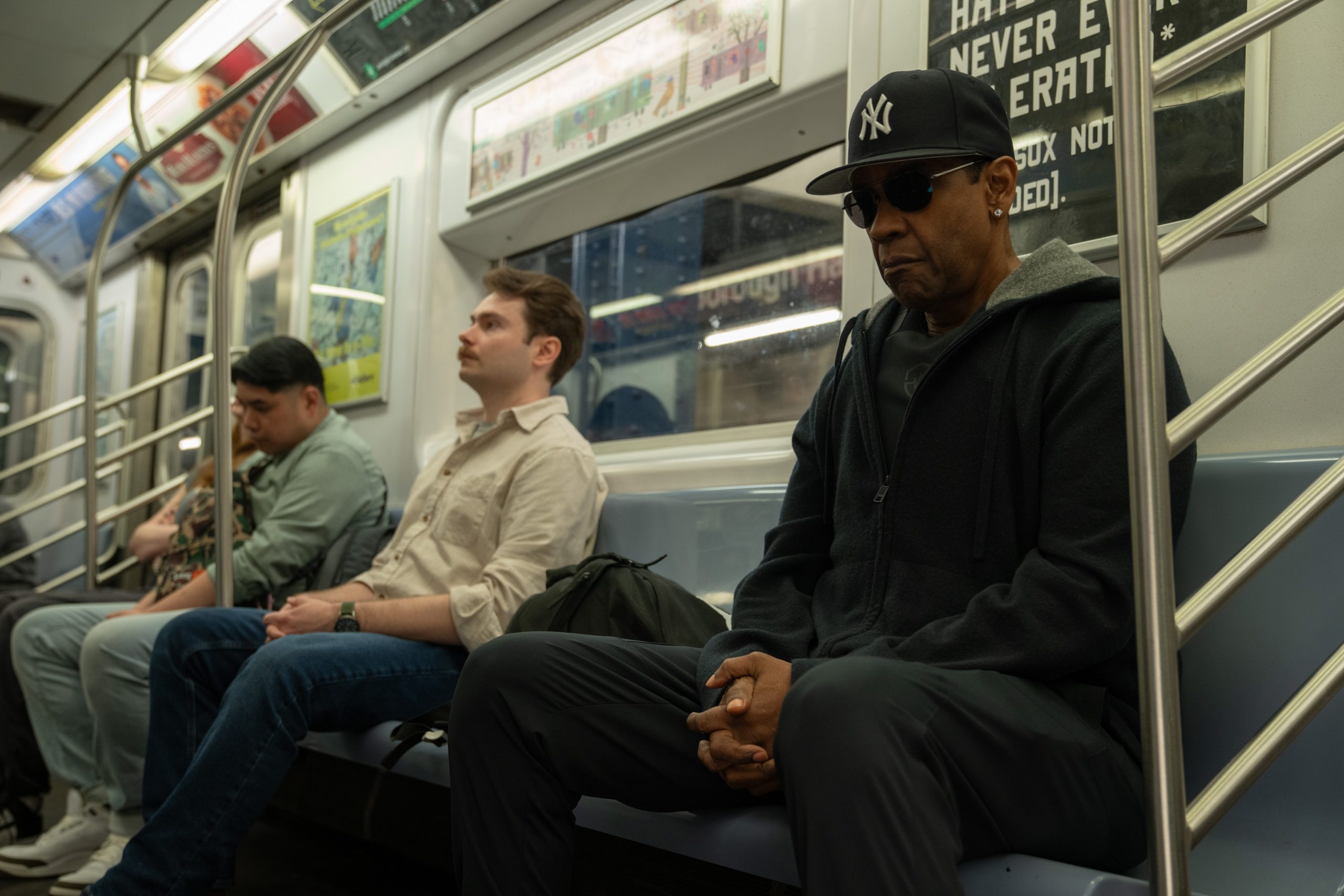Director: Spike Lee
Writer: Evan Hunter, Akira Kurosawa, Hideo Oguni
Stars: Denzel Washington, Jeffrey Wright, A$AP Rocky
Synopsis: When a titan music mogul is targeted with a ransom plot, he is jammed up in a life-or-death moral dilemma
Few filmmakers depict Brooklyn, New York like Spike Lee, from his underseen debut feature Joe’s Bed-Stuy Barbershop: We Cut Heads to Do the Right Thing, his magnum opus, and, in my opinion, one of the best films ever made. He may not be originally from the area, born in Atlanta, Georgia, but Spike grew up there, lives and breathes the area, and knows it by heart, expelling his love for it in all of his New York-set pictures, no matter the narrative or genre. Spike captures the city and its always-moving people with pure authenticity; the specificity of his lens–the way the characters speak and interact, the look and feel, the locations, and the music utilized–makes his works so vivid, making everything come alive instantly.
For his latest work, Highest 2 Lowest (screening out of competition at the 2025 Cannes Film Festival), Spike Lee wants to honor the city of New York, and specifically Brooklyn and Bed Stuy, once again with a reimagined canvas, originally painted by Japanese maestro Akira Kurosawa in his 1963 feature High and Low. The last time he attempted to remake an Asian cinema staple was in 2013 with the Josh Brolin-led Oldboy, and it was (expectedly) terrible. If you ask him today, he might tell you the same thing. But the difference between that film and Highest 2 Lowest is that Spike does not want to remake a Kurosawa picture; he has learned from his mistakes. Instead, he uses it as inspiration to create something new and akin to his style and sensibilities–celebrating New York, exploring today’s music industry, and honoring his bond with Denzel Washington, who has reunited for the first time in nearly twenty years.
Ray Charles’ version of ‘Oh, What a Beautiful Mornin,’ from the musical ‘Oklahoma!,’ is the first track on Spike’s latest jukebox, accompanied by drone shots of the New York skyline. In those first shots, the director encapsulates the beauty behind the non-stop craze of the city. Soon after, we meet David King (Washington), known for once having the “best ears in the business” and the founder of a Rock-a-Fella Records-type label called Stackin’ Hits. On top of his penthouse, King looks at the city from above, like royalty observing their kingdom from their castle. But he isn’t on top of the world as he once was, and the events that transpire will have him fight a bout of morality that will either plunge him deeper into a worse spot or cement his legacy once again.
With utmost success comes some sacrifices, and King’s comes in the loss of connection with his wife, Pam (Ilfenesh Hadera), and son, Trey (Aubrey Joseph), as well as losing control of the label he built from the ground up. After decades of blood, sweat, and tears being spilled to create hit records and launch successful artists, King is being asked to sell his past with the label, effectively removing him entirely from the music scene he helped forge. If you look back at the ‘80s and ‘90s, those were times when many labels were created. You’d see plenty of them have their array of eclectic artists and have great moments of success. Of course, the industry was way different from what it is now.
Once a dominant force, record labels are currently struggling to stay afloat, adapting to the digital age of streaming. Music might be at an even closer reach than before, with Spotify and Apple Music having a vast catalogue available by downloading an app and a monthly subscription. However, that does not necessarily translate to increased sales. Instead, there is a rapid decline in the relevance of labels and physical media. Spike Lee, who has been a part of the industry as a music-video director and soundtrack curator, saw these changes first-hand. He knows how bad things have become, both in cinema and elsewhere. And so he dedicates a part of Highest 2 Lowest to converse about the current landscape through the erasure of record labels and the dissipating relevancy of art in general. It is one of the many aspects that give the film personality and separate it from the Kurosawa picture.
One day, King gets an unexpected call from a mysterious man, later revealed to be an aspiring rapper named Yung Felon (A$AP Rocky), saying that he kidnapped his son and wants 17.5 million dollars in return for him. However, the rapper does not realize that he has taken the wrong child; instead, he grabs the son of King’s driver and old friend, Paul (Jeffrey Wright). But the kidnapper still wants the money, in cash. This forms the High and Low-style narrative framework, a pressure-cooker setup that tests the characters’ values. Will David King pay the amount he is being asked? Will he help his friend and leave behind his family’s well-being in exchange? King has much to think about as he searches New York, while Paul is worried and urges him to help.
Kurosawa delved into the class divide, using his imagery to create striking metaphors of capitalist societies and governments in the post-war era of economic upheaval. Spike Lee’s vision is slightly different; he leads more toward entrepreneurship and perseverance, emphasizing the importance of grinding until you succeed, with some modern conceptualizations of moral quandaries, such as cancel culture and the constant scrutiny of every move in the public eye. The latter is more referred to than examined, as King’s backstory is up to the viewer to interpret via Washington and Wright’s solid, convincing performances. Lee doesn’t offer remarkably fresh insights on the topics he raises, nor does he present his comedic sensibilities with the flair or subtlety seen in his earlier work–the inclusion of mockish memes (many anti-Boston sports team tabloids) placed during the film takes some of the seriousness away from the project.
The Do the Right Thing director is also less experimental than Kurosawa with his imagery, with many sequences during the first half of Highest 2 Lowest, the weakest part of the film overall, feeling flat. They contain Spike Lee’s touch and energy without the verve that made his early work so fascinating, like his double dolly shots and 360 degree-rotating shots. Things tend to pick up right when we switch from King’s apartment room in the skies to the streets of New York–hitting the local spots and riding the subway for some of the film’s most kinetic (and best) moments. He basks in the vibrancy and constant alert of the city to drive the film into its thrills.
Highest 2 Lowest is uneven and occasionally frustrating, giving you the best of both worlds–the highest in the latter half set-pieces and the lowest in the bland, annoying score and cheap comedy and camp. But when it finds its rhythm, the film becomes a gripping showcase of what Spike Lee does best: telling New York stories with a pulse and point of view. It is one of the many projects that veteran filmmakers have produced lately where legacy, both cinematic and cultural, is at the forefront. However, in this case, this isn’t about him entirely; it is more about New York, the music that shaped the city, and the collaboration with his good friend Denzel Washington, who was honored with an honorary Palme d’Or before the world premiere. Highest 2 Lowest may stumble, but its love for the city—and the enduring power of collaboration—rings true.






